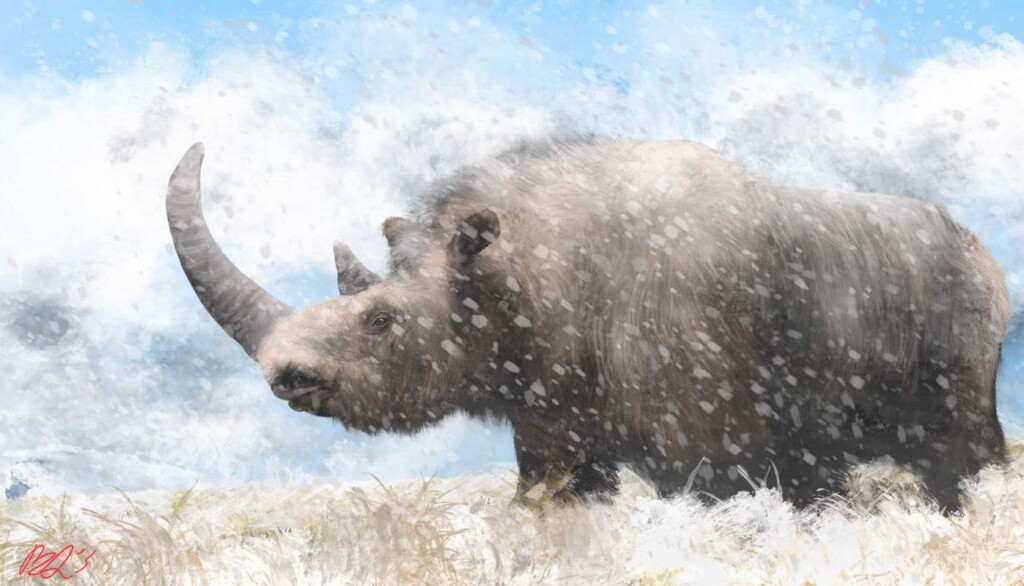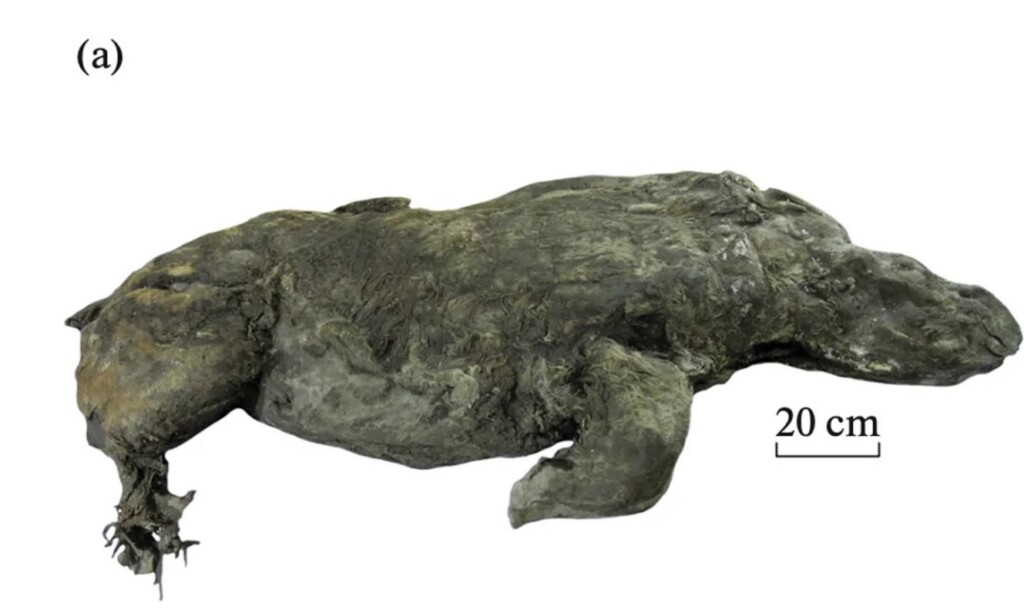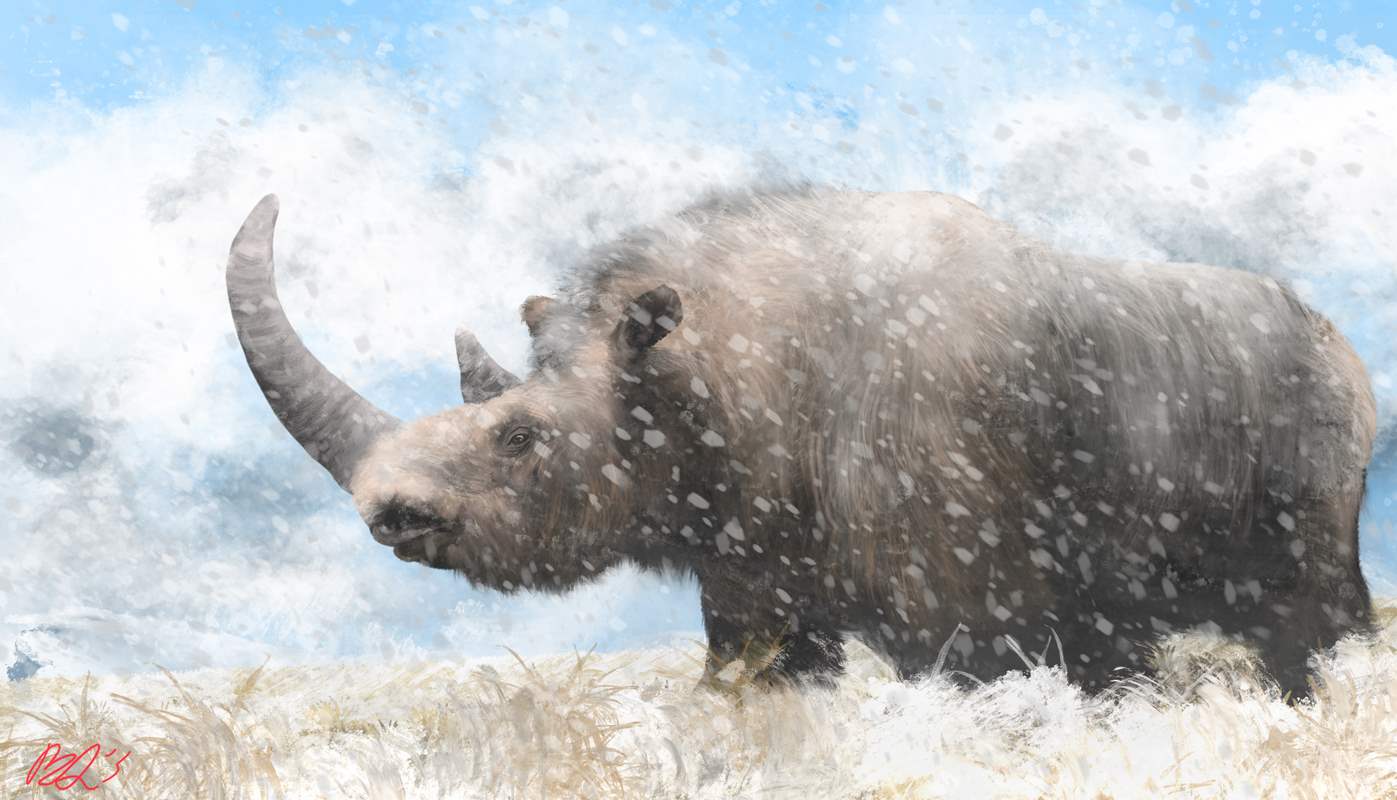
Four years ago, someone came across an extraordinary find—a juvenile rhino from the Pleistocene ‘mummified’ in the Siberian permafrost.
Alerting the relevant authorities, the discovery turned out to be a 4-year-old woolly rhino (Coelodonta antiquitatis) with its fur, skin, and organs intact, offering paleontologists a rare glimpse into the biology of this Ice Age behemoth.
The specimen was found in August 2020 on the banks of the Tirekhtyakh River in Russia’s Sakha Republic. Researchers from institutes in Yakutsk and Moscow just released a paper on their investigations into the animal.
None of them were able to speak with Western news outlets, but the general consensus from scientists in the field not involved with the research is that the most notable discovery is the presence of a fatty hump around the shoulders very similar to the one seen in modern camels.
“We knew from skeletons and cave art that woolly rhinos had large shoulder humps,” Adrian Lister, a paleobiologist at the Natural History Museum in London told Ars Technica, adding that “maybe this is the first time fat has actually been discovered there, which for sure is a great discovery if so.”

Indeed it has been hypothesized that perhaps these woolly rhinos had reservoirs of calories stored in a camel-like hump for long, bleak winters. Other species of Ice Age mammals had this same trick, but other researchers assumed it was part of the animal’s display equipment.
While the authors of the examination didn’t explain how it was found, leading to the suspicion it was unearthed by mammoth ivory hunters, the animal’s left half was so badly damaged they could only conclude it was eaten by predators, perhaps suggesting it was found after defrosting naturally from the permafrost.
The specimen bore a light brown coat of fur, suggesting that rhinos were born with something like a blonde coloration that gradually darkened as hairs in preparation for adulthood.
OTHER ANCIENT BEASTS: Paleontologists Hunted for This Giant Bird Skull for Over a Century–Finally, a Complete ‘Thunderbird’
Another feature of its fur were the preserved remnants of small parasites—water fleas—which no longer exist in the region today, indicating how much the environment, even so far north, has changed. Future examinations, perhaps on its intact stomach, might reveal details about its diet.
It was the second-largest animal in its ecosystem behind the woolly mammoth, and despite the smilarities, they inhabited different enviornments. Additionally, the mammoth made the leap across the Bearing Land Bridge, while the rhino didn’t. Paleoecologists don’t know why, and it remains one of the bigger questions in Siberan history.
MORE ICE AGE MUMMIES: First Ever Perfectly-Preserved Extinct Ice Age Cave Bear Discovered by Reindeer Herders in the Russian Arctic
While impressive, this isn’t the most complete rhino ever found subjected to cryomummification. A specimen from 1929 discovered in Poland that was missing only fur and horn, and a plaster cast made for the Natural History Museum in London seems like the animal died last week.
SHARE The Story Of This Ice Age Rhino Mummy With Your Friends…




















